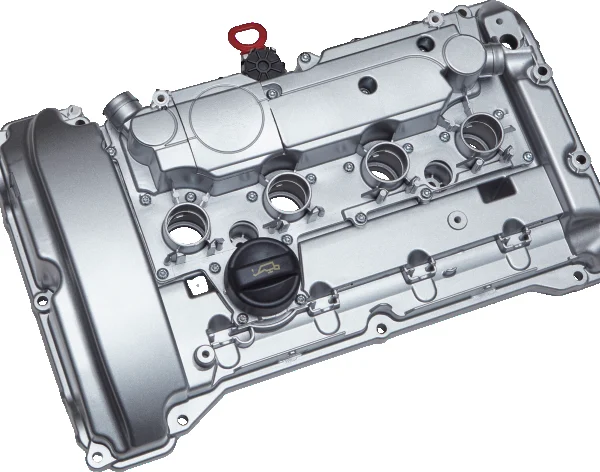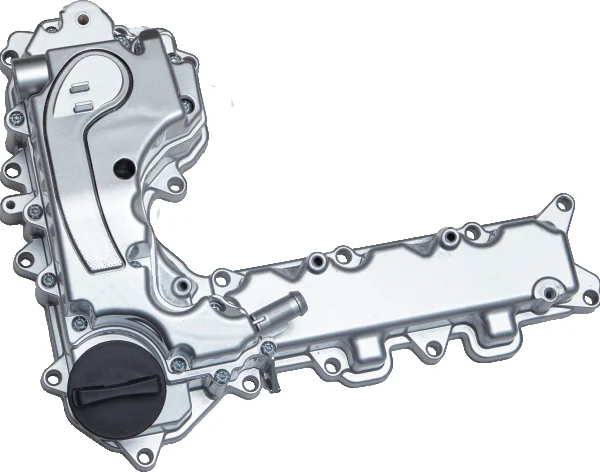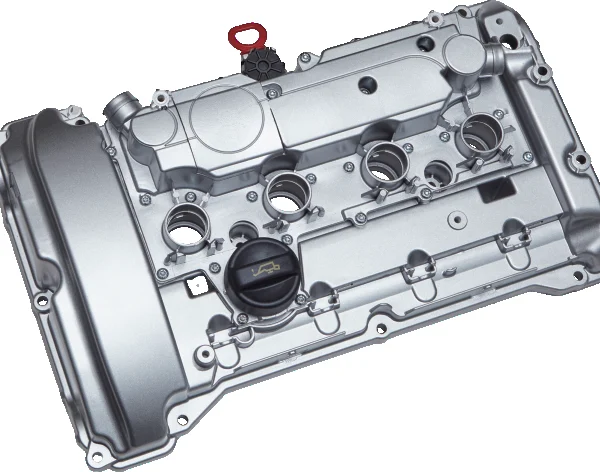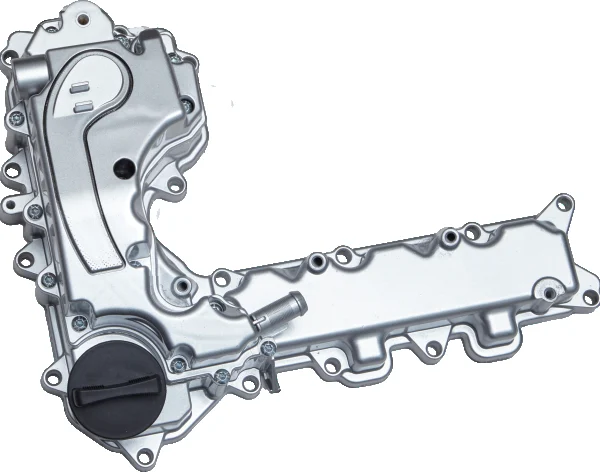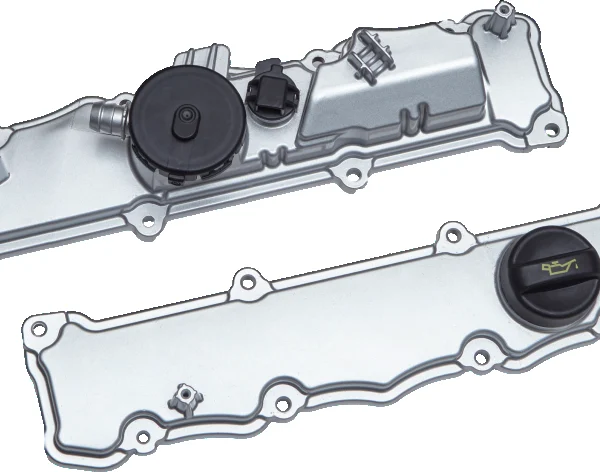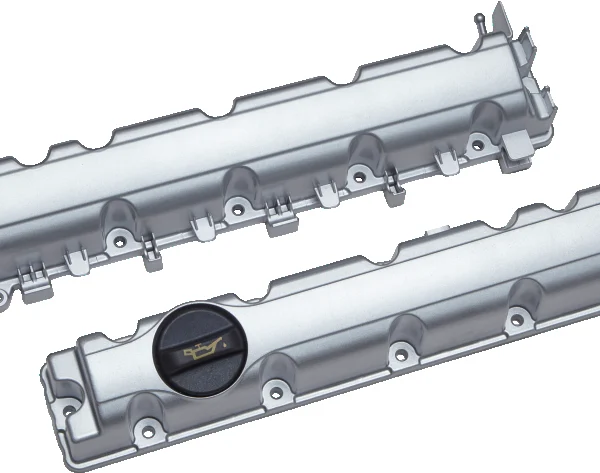Your Reliable
Engine Valve Cover Manufacturer
The engine valve cover is an important automotive part mounted on top of the engine that protects the valve train (including the valves and rocker arms) from dust and debris. Usually made of metal or plastic, they are used to seal the top of the engine. Many valve covers also have gaskets and vents. And a damaged valve cover can lead to leaks or engine noise. Overall, it ensures that the engine runs smoothly and stays clean.
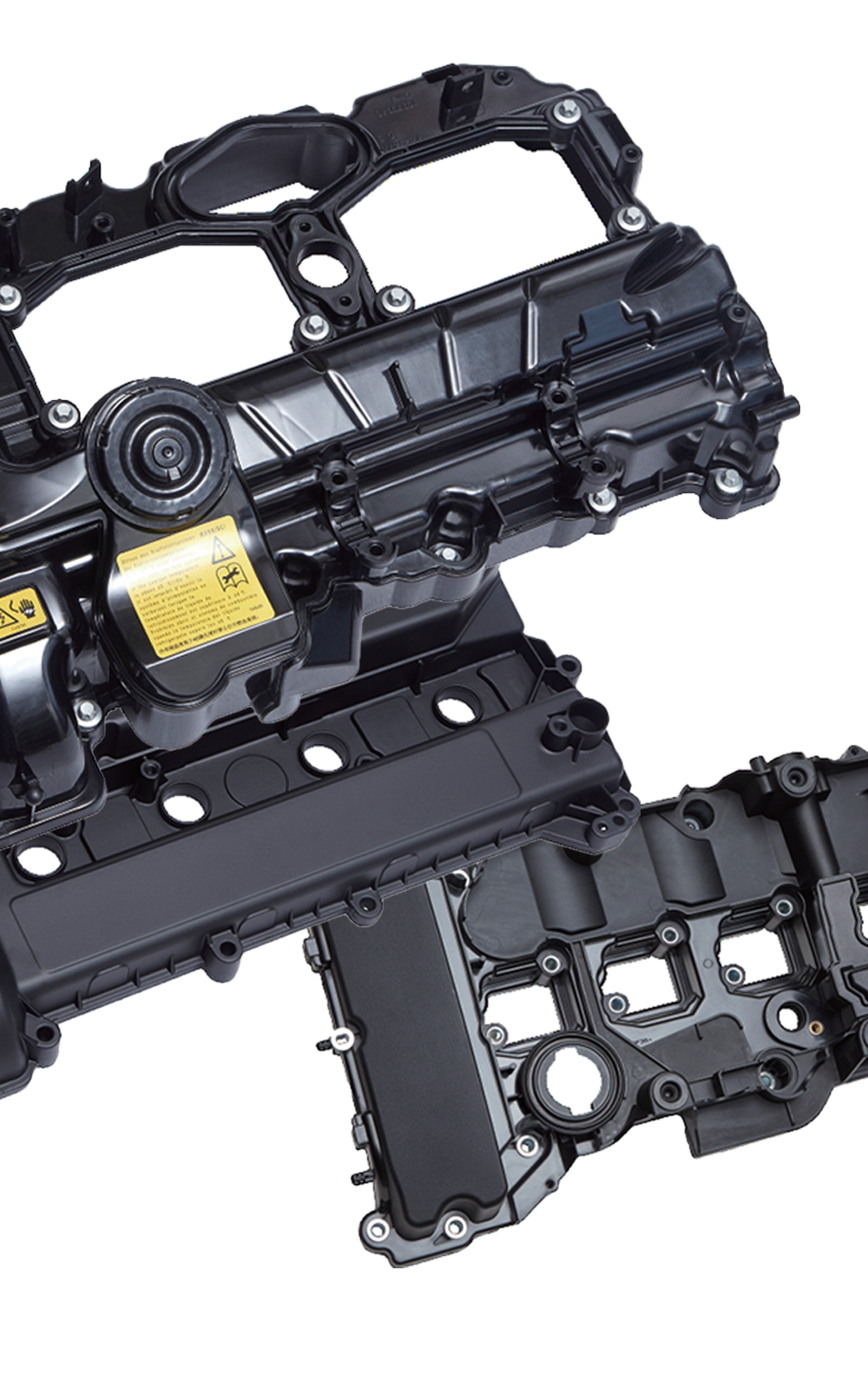
Why a engine valve cover is vital ?
Seal Protection:
Prevents lubricating oil leakage while blocking dust, moisture and other contaminants from entering the valve chamber, ensuring internal cleanliness.
Forms a closed space with the cylinder head to maintain compression chamber stability and safeguard combustion efficiency of the combustible mixture.
Lubrication And Temperature Control:
Assists in lubricant circulation, providing adequate lubrication to moving parts such as valves and rocker arms.
Maintains stable internal temperatures through high-temperature-resistant materials (such as PA66-GF35 used by Vika), preventing deterioration of the oil.
Structural Protection And Component Integration:
Protects valve actuators (e.g. camshafts) from mechanical wear and prolongs engine life.
Accessories such as gaskets and sensors can be integrated to enhance engine function monitoring.
Failure Prevention:
Poor sealing can lead to oil leaks, carbon build-up and even fault light alarms, so the condition of the gaskets needs to be checked regularly.
Engine Valve Cover We Offer
Role Of The Engine Valve Cover
The engine valve cover is used to protect and support the engine’s valve train. It is mounted on the cylinder head and protects the valves and rocker arms. It prevents dirt, dust and debris from entering the engine. The gasket on the valve cover provides a tight seal to prevent oil leakage. It also keeps oil inside to lubricate moving parts such as camshafts. Additionally, some covers come with vents to safely release built-up pressure. This ensures smooth engine performance and reduces wear and tear. If damaged, leaks or noise may occur, making maintenance important. In short, it protects the components and keeps the engine running reliably every day.
- Protecting The Valvetrain
- Preventing Dust Ingress
- Sealing Oil Leaks
- Keeps Lubricant Circulate
- Reducing Engine Noise
- Adjust Internal Pressure
- Valve Train Support
- Preventing Damage
- Enhancing Durability
- Simplifying Maintenance
- Ensuring Valve Operation
- Reducing Fuel Loss
- Protecting Internal Parts
- Keep The Engine Clean
- Extending Engine Life
FAQs For Engine Valve Cover
How do I know if my valve cover is leaking?
You may notice oil stains on the outside of the engine, an odor of burning oil, or a low oil level.
Also, you may see oil pooling around the cap or hear a ticking sound coming from the engine.
Can I drive with a damaged valve cover?
This is NOT recommended.
Damaged valve covers can cause oil leakage, resulting in engine damage, reduced performance, and even the risk of fire.
It should be replaced or repaired immediately.
How often should I replace the valve cover gasket?
It is usually replaced every 50,000 to 100,000 miles, depending on your vehicle.
However, it should be replaced as soon as possible if the following are found during a routine maintenance check:
- Leaking
- Cracked
- Worn
Why does my valve cover have a vent?
The exhaust port releases excess pressure that builds up inside the engine.
Prevents damage to seals and ensures smooth engine operation by maintaining proper internal pressure levels.

